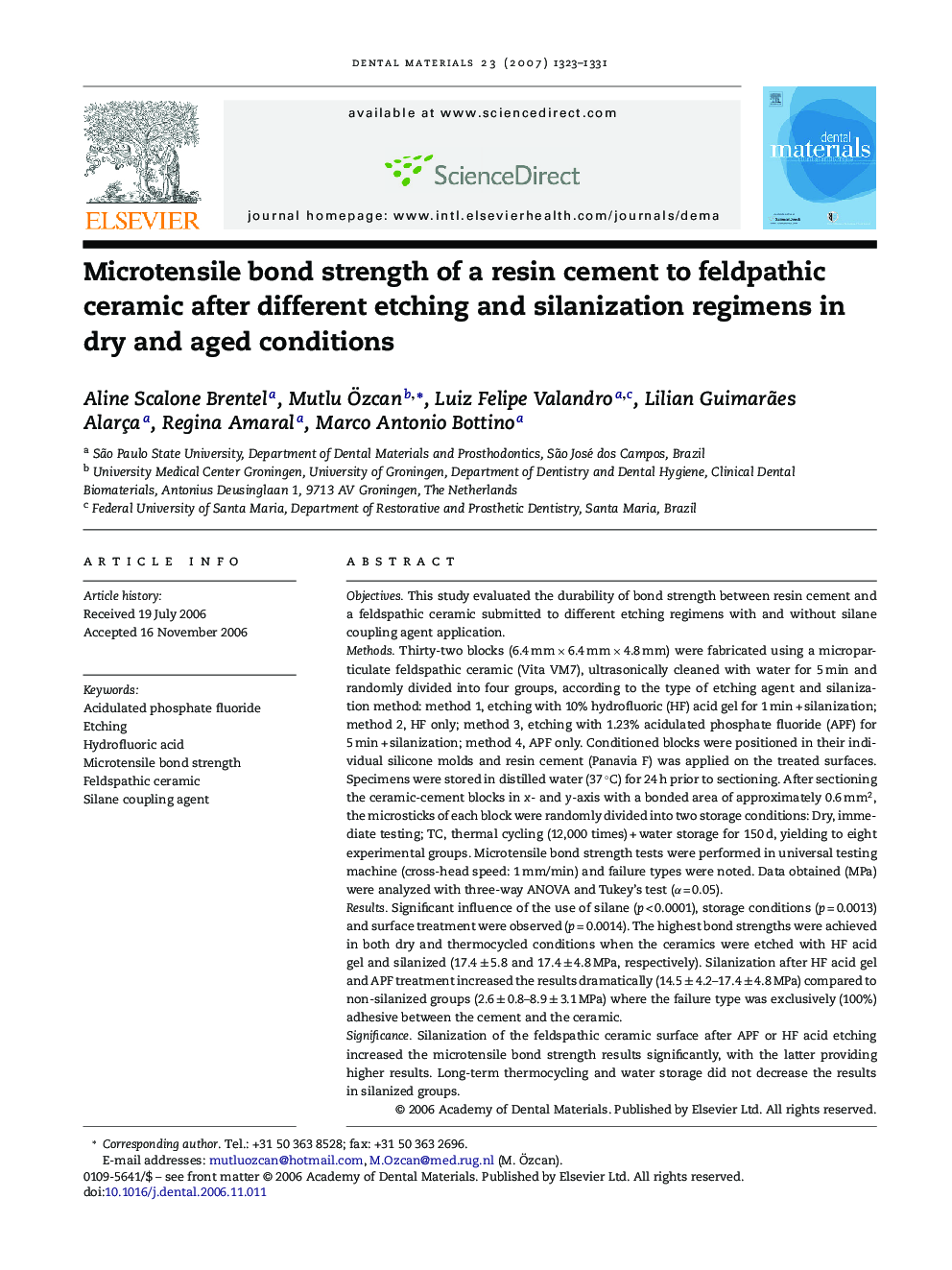| کد مقاله | کد نشریه | سال انتشار | مقاله انگلیسی | نسخه تمام متن |
|---|---|---|---|---|
| 1422884 | 986464 | 2007 | 9 صفحه PDF | دانلود رایگان |

ObjectivesThis study evaluated the durability of bond strength between resin cement and a feldspathic ceramic submitted to different etching regimens with and without silane coupling agent application.MethodsThirty-two blocks (6.4 mm × 6.4 mm × 4.8 mm) were fabricated using a microparticulate feldspathic ceramic (Vita VM7), ultrasonically cleaned with water for 5 min and randomly divided into four groups, according to the type of etching agent and silanization method: method 1, etching with 10% hydrofluoric (HF) acid gel for 1 min + silanization; method 2, HF only; method 3, etching with 1.23% acidulated phosphate fluoride (APF) for 5 min + silanization; method 4, APF only. Conditioned blocks were positioned in their individual silicone molds and resin cement (Panavia F) was applied on the treated surfaces. Specimens were stored in distilled water (37 °C) for 24 h prior to sectioning. After sectioning the ceramic-cement blocks in x- and y-axis with a bonded area of approximately 0.6 mm2, the microsticks of each block were randomly divided into two storage conditions: Dry, immediate testing; TC, thermal cycling (12,000 times) + water storage for 150 d, yielding to eight experimental groups. Microtensile bond strength tests were performed in universal testing machine (cross-head speed: 1 mm/min) and failure types were noted. Data obtained (MPa) were analyzed with three-way ANOVA and Tukey's test (α = 0.05).ResultsSignificant influence of the use of silane (p < 0.0001), storage conditions (p = 0.0013) and surface treatment were observed (p = 0.0014). The highest bond strengths were achieved in both dry and thermocycled conditions when the ceramics were etched with HF acid gel and silanized (17.4 ± 5.8 and 17.4 ± 4.8 MPa, respectively). Silanization after HF acid gel and APF treatment increased the results dramatically (14.5 ± 4.2–17.4 ± 4.8 MPa) compared to non-silanized groups (2.6 ± 0.8–8.9 ± 3.1 MPa) where the failure type was exclusively (100%) adhesive between the cement and the ceramic.SignificanceSilanization of the feldspathic ceramic surface after APF or HF acid etching increased the microtensile bond strength results significantly, with the latter providing higher results. Long-term thermocycling and water storage did not decrease the results in silanized groups.
Journal: Dental Materials - Volume 23, Issue 11, November 2007, Pages 1323–1331